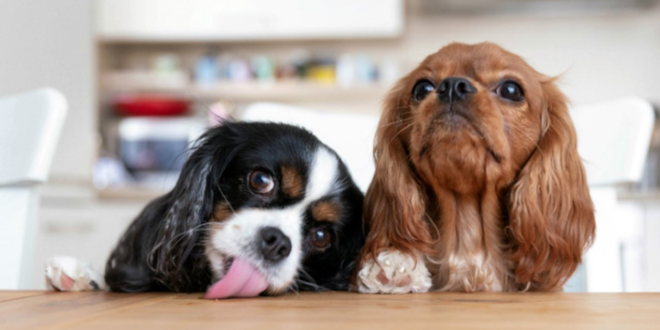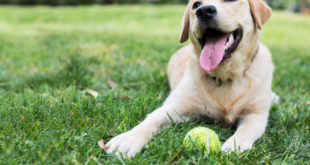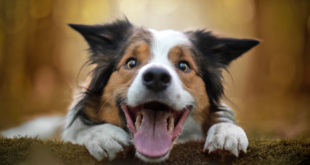How to Stop Dogs from Chewing Things – Dogs are lovable and playful creatures, but their natural urge to chew can sometimes cause problems. Chewing is a natural behavior for dogs, but it can become destructive when they start chewing on things they shouldn’t, such as furniture, shoes, or electrical wires. Fortunately, there are ways to stop dogs from chewing things.
Table of Contents
How to Stop Dogs from Chewing Things
Understanding Your Dog’s Behavior
Before you can stop your dog from chewing, it’s important to understand why they do it. Chewing is a natural behavior for dogs that starts when they’re puppies and lasts throughout their lives. Puppies chew to relieve the pain of teething and to explore their environment. Adult dogs chew to relieve stress, boredom, and anxiety. Some dogs also chew because they’re hungry or because they enjoy the taste or texture of certain objects.
It’s important to note that not all dogs chew the same objects. Some dogs prefer soft objects like pillows and blankets, while others prefer hard objects like furniture and shoes. Understanding your dog’s chewing preferences can help you prevent them from chewing on things they shouldn’t.
Another important factor to consider is your dog’s stage of development. Puppies are more likely to chew than adult dogs because they’re exploring the world with their mouths. Adolescent dogs are also more likely to chew because they’re going through a stage of exploration and testing boundaries.
Prevention Techniques
Preventing your dog from chewing on things they shouldn’t is the first step in stopping the behavior. Making the objects less attractive to dogs is a great way to start. For example, you can spray bitter-tasting sprays on furniture or shoes to make them less appealing to your dog. You can also use covers or barriers to protect your belongings.
Providing alternatives to chew on is another effective technique. Giving your dog plenty of chew toys and bones can redirect their chewing behavior away from your belongings. You can also freeze a wet towel or a Kong toy filled with peanut butter to provide a satisfying chewing experience.
Training and conditioning techniques can also help prevent your dog from chewing. Teaching your dog basic commands like “leave it” and “drop it” can help them understand what they can and cannot chew on. You can also use positive reinforcement techniques, such as treats and praise, to reward your dog for chewing on the right objects.
Management Techniques
If prevention techniques aren’t working, management techniques can help. Creating a dog-friendly environment is key. Remove all objects that your dog is likely to chew on and replace them with appropriate chew toys. You can also use baby gates or close doors to prevent your dog from accessing certain areas of the house.
Using deterrents is another effective management technique. You can use noisemakers like shaking a can of coins or spraying your dog with water to deter them from chewing on things they shouldn’t. You can also use a citronella spray collar to discourage chewing behavior.
Using crates or confining the dog to certain areas can also be helpful. A crate can provide a safe and comfortable space for your dog
to relax in and prevent them from chewing on your belongings when you’re not home. Make sure the crate is big enough for your dog to stand up, turn around, and lie down comfortably.
Rehabilitation Techniques
If your dog’s chewing behavior has already become a problem, rehabilitation techniques can help redirect their behavior. Redirection techniques involve replacing the object your dog is chewing on with an appropriate chew toy. You can also teach your dog a “drop it” command to encourage them to drop the object they’re chewing on and pick up a chew toy instead.
Addressing underlying anxiety issues can also be an important part of rehabilitation. Separation anxiety, boredom, and stress can all lead to destructive chewing behavior. You can address these issues by providing your dog with plenty of exercise, mental stimulation, and attention. You can also seek professional help from a veterinarian or dog behaviorist.
Conclusion How to Stop Dogs from Chewing Things
Stopping your dog from chewing on things they shouldn’t requires a combination of prevention, management, and rehabilitation techniques. Understanding why your dog chews and providing them with appropriate chew toys is the first step. If your dog’s chewing behavior has already become a problem, management techniques like creating a dog-friendly environment and using deterrents can help. Rehabilitation techniques like redirection and addressing underlying anxiety issues can also be effective.
By following these tips, you can stop your dog from chewing on things they shouldn’t and create a happy and healthy relationship with your furry friend.
FAQs
Dogs chew things for many reasons, including teething, exploration, stress, boredom, hunger, and anxiety.
2. What are some objects dogs like to chew on?
Dogs can chew on a variety of objects, including furniture, shoes, clothing, electrical wires, and toys.
3. Can I train my dog to stop chewing on things?
Yes, you can train your dog to stop chewing on things by providing appropriate chew toys, using positive reinforcement techniques, and teaching basic commands like “leave it” and “drop it.”
4. What should I do if my dog’s chewing behavior has become a problem?
If your dog’s chewing behavior has become a problem, prevention, management, and rehabilitation techniques can help. You can also seek professional help from a veterinarian or dog behaviorist.
5. How can I address underlying anxiety issues in my dog?
You can address underlying anxiety issues in your dog by providing them with plenty of exercise, mental stimulation, attention, and seeking professional help from a veterinarian or dog behaviorist.
 Treat For Dog – Brain Training for Dogs, Dog Training & Obedience Discover Treat For Dog and get your pup on the path to smarter, happier, and healthier living with brain training for dogs.
Treat For Dog – Brain Training for Dogs, Dog Training & Obedience Discover Treat For Dog and get your pup on the path to smarter, happier, and healthier living with brain training for dogs.




